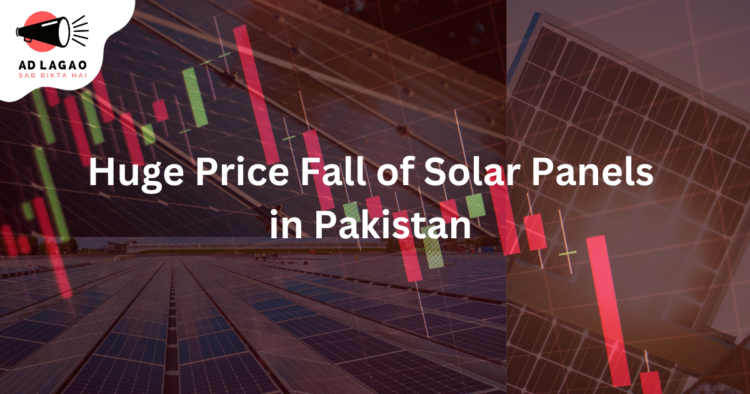Table of Contents
Recent news stories have shocked the solar industry by showing that the prices of solar panels in the country have dropped significantly and without warning. A 70,000-watt solar panel has dropped in price a lot, to just 30,000 rupees. We’ll talk about what caused this shocking change and what it means for the solar panel market as a whole in this article.
Problems with Making Things
Problems with the production of solar cells and photovoltaic (PV) modules, which are more widely known as solar panels, are the main reasons for this big price drop of Solar Panels in Pakistan. These problems are not just random; they are part of a plan to make China less dominant in the solar production sector.
Getting rid of China’s Power
Large-scale projects were started in the US and Europe to break free from China’s tight grip on solar manufacturing. The goal was to build big factories that would only make PV cells and modules. The objective was to make the world market for solar technology more competitive as well as to find new sources of this technology.
What Problems Were Solved?
Even though the people who started these projects meant well, they have had a lot of problems. Large-scale plants have had problems with delays and not finishing on time, which has changed the expected timeline for production. These failures have changed the way the solar panel market works, which has led to unexpected results.
Changes in Market Dynamics
The sudden drop in the price of solar panels is directly linked to the problems that the projects meant to weaken China’s hold on the world are having. The delay in building new factories has left a hole in the market, which has led to a brief oversupply of solar panels. Because of this, prices have dropped dramatically, giving people and companies a unique chance to invest in solar energy at a fraction of the cost of before.
Making the Most of the Chance
Solar panel prices have never been this low before, so now is the perfect time for people and businesses to think about switching to solar energy. The lower price not only makes it easier for more people to get it, but it also fits with efforts around the world to switch to green and sustainable energy sources.
The Way Ahead
Even though the recent drop in prices was not expected, it shows how complicated the solar business is. The market is expected to stabilize once the problems that alternative manufacturing projects are facing are fixed and large-scale facilities start running. As a result of this stabilization, prices for solar panels may become more fair and competitive.
Conclusion
The sudden and big drop in the prices of solar panels in Pakistan is due to problems with production and efforts to stop China from being the biggest market. There have been problems with efforts to build alternative production facilities, but this has led to an oversupply that has made it possible for people and companies to invest in solar energy at a very low cost. With these problems behind them, the solar market should become more diverse and competitive in the coming years.
Frequently Ask Questions
Why did solar panel in Pakistan prices decrease so suddenly?
The unexpected decrease is a result of disruptions in manufacturing and delays in projects aimed at reducing China’s dominance in the solar manufacturing sector.
How long is this reduced pricing expected to last?
The duration of the reduced pricing is contingent on the resolution of challenges faced by alternative manufacturing projects. Once operational, the market dynamics may stabilize.
Is now a good time to invest in solar panels?
Yes, the current drop in prices presents a unique opportunity for individuals and businesses to invest in solar energy at a significantly reduced cost.
What challenges have the initiatives to break China’s dominance faced?
Delays and completion issues in establishing large-scale facilities for PV cell and module production have been the primary challenges.
Are there long-term benefits to investing in solar energy during this period?
Yes, investing in solar energy during this period not only takes advantage of reduced prices but also aligns with global efforts towards sustainable and renewable energy sources.

 Animals
Animals  Bikes
Bikes  Books, Sports & Hobbies
Books, Sports & Hobbies  Electronics & Home Appliances
Electronics & Home Appliances  Fashion & Beauty
Fashion & Beauty  Furniture & Home Decor
Furniture & Home Decor  Industrial & Agriculture
Industrial & Agriculture  Jobs
Jobs  Kids Toys
Kids Toys  Phones
Phones  Property for Rent
Property for Rent  Property for Sale
Property for Sale  Services
Services  Vehicles
Vehicles 





